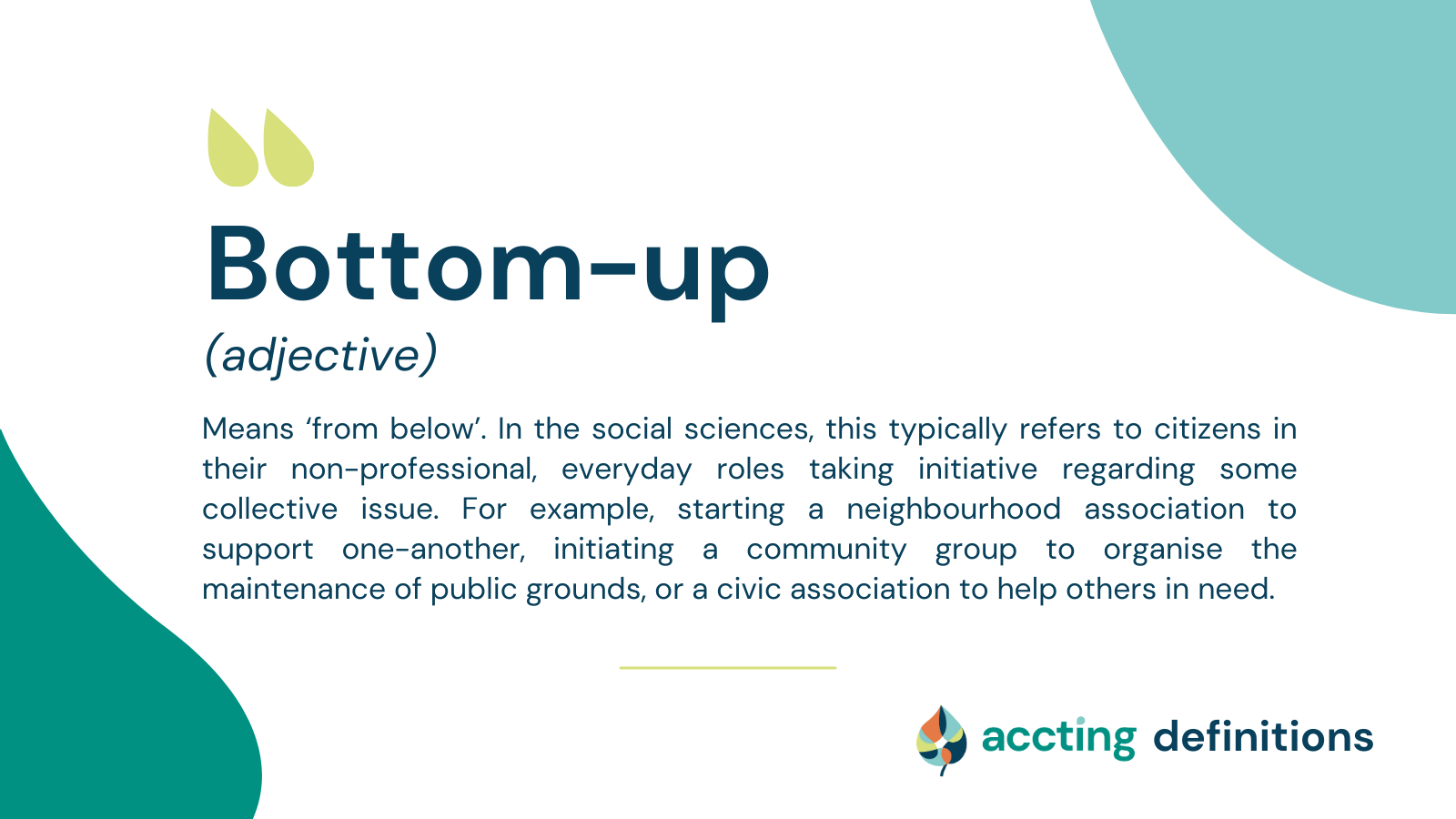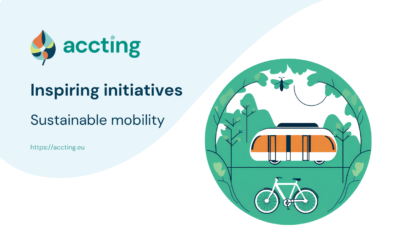Bottom-up usually refers to citizen-led activities where citizens collaborate and themselves keep control of the aims, the means, and the actual implementation of their activities (Healey 2015). The initiatives are often rooted in some form of dissatisfaction with the current situation, a perception of inability, inaction, or sluggishness of public actors in responding thereto, and a desire to tackle the issue at hand (Van Eijk & Steen 2016). Bottom-up initiatives can also be a trigger for larger processes of transformative change; some protest movements can be seen as bottom-up. As a result, bottom-up activities affect not only other citizens, but also tend to imply some sort of pressure put on ‘those above’. These are typically political representatives, but could also be, for example, companies or international organisations.
Bottom-up is therefore also used in opposition to the concept of ‘top-down’, which refers to something being enacted or enforced by authorities. More broadly, it also means that citizens create spaces of participation themselves, instead of being invited into spaces of participation by, for example, government actors. Nonetheless, bottom-up initiatives often include – or gradually develop – links to formal institutions like local authorities, NGOs, and governmental authorities (Eckerberg et al. 2015).
Bottom-up approaches are very common and often highly impactful, especially in relation to environmental problems and social inequalities. The ACCTING research team has mapped bottom-up initiatives in 34 countries, in order to identify and analyse existing societal responses to the European Green Deal. The result of this task has provided us with an overview of more than 693 inspiring bottom-up initiatives, which we will use at developing solutions and the implementation of outputs for policy makers and other affected societal actors.
To know more:
-
Eckerberg K. et al. (2015). Incentives for collaborative governance: Top-down and bottom-up initiatives in the Swedish mountain region. Mountain Research and Development, 35(3), 289-298.
-
Healey P. (2015). Citizen-generated local development initiative: recent English experience. International Journal of Urban Sciences, 19(2), 109-118.
-
Jans, L. (2021). Changing environmental behaviour from the bottom up: The formation of pro-environmental social identities. Journal of Environmental Psychology, 73, 101531.
-
Thaler T., and S. Seebauer (2019). Bottom-up citizen initiatives in natural hazard management: Why they appear and what they can do? Environmental Science & Policy, 94, 101-111.
-
Van Eijk C., and T. Steen (2016). Why engage in co-production of public services? Mixing theory and empirical evidence. International Review of Administrative Sciences, 82(1), 28- 46.



